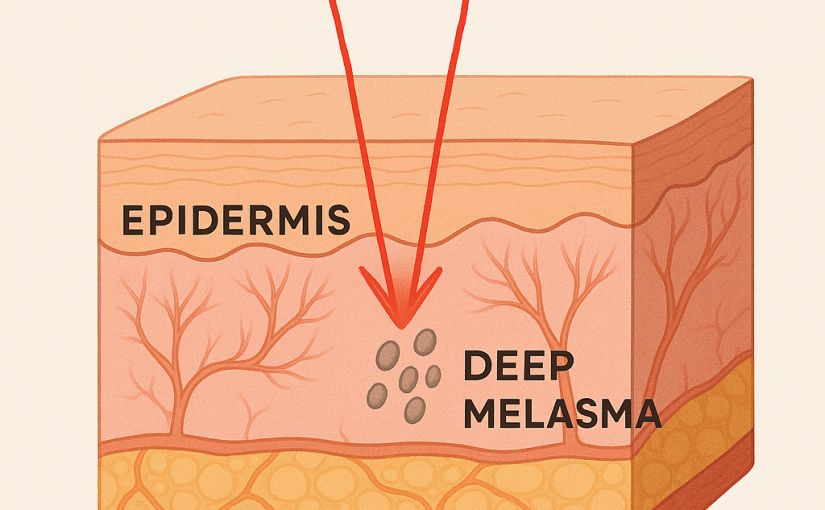Understanding Deep Melasma Before Choosing a Treatment
Melasma is a common skin condition, particularly in women over 30. While many have tried creams or laser treatments with limited results, the issue often lies in the depth of the pigmentation. Deeper melasma, located in the dermis (dermal melasma), does not respond well to superficial treatments.
For this reason, treatment technologies must be able to deliver energy deep into the skin without damaging the surface. Among the most trusted options available is the Q-switched Nd:YAG laser.
1064 nm Wavelength: Deep, Safe, and Precise
The Q-switched Nd:YAG laser delivers energy at a wavelength of 1064 nanometers, which has several unique advantages:
- Penetrates into the dermis, targeting pigment at its source
- Does not damage the superficial skin layer, unlike lasers with shorter wavelengths, which are more likely to cause irritation or rebound hyperpigmentation
- Uses nanosecond pulse durations, allowing it to break pigment clusters into tiny particles with minimal thermal injury
Modern devices are also equipped with a Laser Toning mode, which gently treats the entire face to stimulate collagen production, refine skin texture, reduce pore size, and restore a more radiant complexion.
Q-switched Nd:YAG is widely known for its high safety profile, low risk of side effects, and long-standing clinical use. It continues to evolve with technological improvements that enhance outcomes while maintaining patient safety.
For best results, it is recommended to use devices that are certified by the US FDA.
Laser Alone Is Not Enough — Skincare and Internal Health Matter
Even with a powerful tool like the Q-switched Nd:YAG laser, melasma treatment requires a holistic approach. Without consistent skincare and internal balance, melasma is likely to recur.
- Daily Skincare Essentials
- Broad-spectrum sunscreen (UVA & UVB protection)
- Vitamin C serum to fight oxidative stress and brighten the skin
- Gentle whitening creams that reduce pigmentation without causing irritation
- Skin Rejuvenation Support
- Multiblend therapy, a transdermal vitamin infusion that improves skin recovery, strengthens the barrier, and reduces inflammation
- Internal Health and Hormonal Balance
- Prioritize adequate sleep
- Manage chronic stress
- Hormonal balance plays a major role in melasma development
If underlying health concerns are suspected, patients are encouraged to consult a physician. Natural supplements and integrative medicine can be used safely for long-term health and skin improvement.
In Summary
The Q-switched Nd:YAG laser remains one of the most effective and trusted options for treating deep melasma, thanks to its ability to safely target pigment in the dermis without injuring the skin surface. When paired with proper skincare, internal wellness, and medical supervision, the results can be both impressive and long-lasting.
Melasma treatment isn’t just about removing pigment—it’s about restoring balance inside and out.
